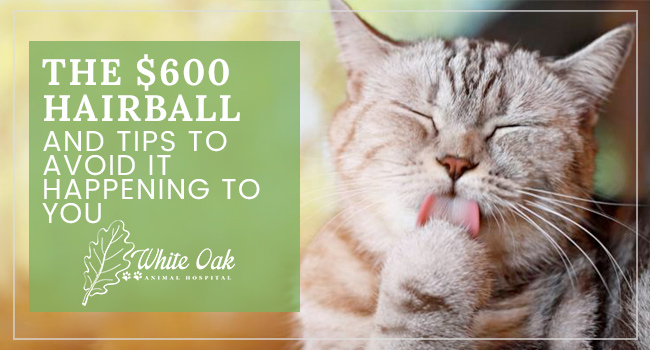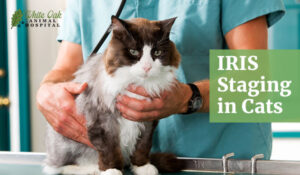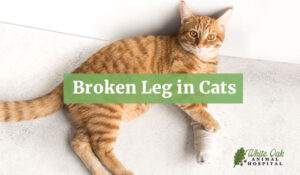
Why Learn How to Treat Hairballs in Cats?
If you own cats, you’ve probably dealt with a hairball or two.
If you plan to have cats, I encourage you to read on and educate yourself because hairballs are in your future.
Some people may think I’m joking when I say ‘$600 Hairball’.
Some of you may think we’re crazy or ripping clients off. Others have been there, done that, and know what I’m about to preach.
This blog topic has been heavy on my mind for a few weeks. After treating many of these cases, I realized it is beyond time to make this a hot topic.
The truth is, I’m not joking. We’re not crazy. And above all, we’re not just trying to take your money. Let’s discuss it!
The Science of Hairballs in Cats
Trichobezoar. Yes, there is a scientific medical term for it.
I can’t tell you how many times the doctor purposely tripped me up on that word when I first got out of tech school.
Needless to say, I know and recognize the term now. Pronunciation is still for the birds, though.
There’s really not that much science behind hairballs in cats.
It’s a compacted ball of hair stuck in the stomach that is unable to successfully pass through a cat’s GI system.
Healthy cats groom, so small amounts of hair are almost always present in their stool.
Hairballs result from either excessive hair ingestion (due to excessive hair loss) or problems with the GI tract moving things along properly.
The tricky part is diagnosing them.
You can’t.
Diagnosing… It Gets a Little ‘Hairy’
Symptoms of trichobezoar are very typical of many other diseases cats can acquire.
The most common symptoms we see are:
- loss of appetite
- hiding
- lethargy
- nose breathing
- vomiting
Cats can have one or many of these symptoms.
Still, there are no tests to positively diagnose hairballs, leaving veterinarians with no other option than to rule out other possibilities.
After consideration of the physical exam and the patient’s medical history, blood work and/or x-rays are generally the subsequent ordered tests.
And no, you cannot see hairballs on an x-ray.
At this point, many of you are probably thinking this is overkill. “Why not just treat for hairballs? What’s the harm in trial and error?”
Sometimes there is no harm. In fact, most of the time, we DO treat on suspicion.
However, thyroid disease, diabetes, asthma, heart disease, ingestion of a foreign object, and many more diseases also fit one or more of the symptoms listed above.
Moreover, a handful of these issues can result in death if medical intervention is not done promptly.
How to Treat Hairballs in Cats at Home
After other possible causes have been eliminated, treatment for hairballs is pretty simple.
It’s partially a “wait-and-see” game.
Most of the time, treatment can be done at home with mineral oil or a commercially available hairball supplement (our favorite is Laxatone by Vetoquinol®).
The goal here is to lube the gastrointestinal tract so the hairball can slide out either end of the cat.
Most of the time, with persistence and time, this method works. Surgical intervention is rarely necessary.
CAUTION: ONLY USE MINERAL OIL AS INSTRUCTED BY YOUR VETERINARIAN. NEVER SQUIRT MINERAL OIL DIRECTLY IN A CAT’S MOUTH, AS IT CAN RESULT IN DEATH.
Occasionally, we have patients who have developed other medical problems in addition to the hairball.
These secondary illnesses typically result from ongoing symptoms prior to diagnosis (i.e., excessive coughing can lead to pneumonia).
Antibiotic therapy may be required in these cases.
Most owners think hairballs are just a standard cat problem.
After all, a cat is going to groom itself. While it is a common problem, it is definitely not a normal one.
Hairballs are usually a sign of an underlying medical problem.
For instance, excessive hair loss can lead to hairballs, but excessive hair loss isn’t normal!
Sometimes it can be as simple as improving your cat’s diet or ensuring he has no parasites.
Other times it may be a little more serious.
However, with a good physical exam and possibly some testing, your veterinarian should be able to get your kitty back on the road to health.
How to Prevent Hairballs in Cats
NOTHING in life is 100% preventable. If you don’t believe me, ask Murphy… and kindly tell him to stop following me around.
But, a little prevention can go a long way.
All cat owners should be giving their feline friends a form of hairball prevention on a routine basis.
Gel supplements are our favorite here at White Oak.
Most over-the-counter gel supplements are flavored to appease cats’ taste buds, so you may even find it to be an enjoyable practice for your cat.
My co-worker’s cat literally chases her down for it.
- Other methods of prevention include:
- specially formulated food/treats
- frequent brushing to remove excess hair
- applying flea/tick prevention on a regular basis
Ensuring your cat eats a balanced diet is also very important to skin health.
Above all, pick the most agreeable method for you and your cat.
Or, as most cat owners already know, the best method is whatever is agreeable to the cat.
Check out Vet Classics Natural Hairball Remedy at TCVM Pet Supply!
In the long run, maybe you can dodge the $600 hairball!
Questions? Comments? We’d love to hear your thoughts, so leave them below!
Related Posts
-
When Should I Spay or Neuter My Pet?
Should I Spay or Neuter My Pet? For many years, veterinarians recommended clients spay or…
-
The Best Way to Get Rid of Cat Allergies Naturally
Would You Like to Know How to Get Rid of Cat Allergies Naturally? Like people,…
-
What Every Pet Owner Should Know About Pet Allergies
Whether human or pet, allergies usually prove to be a complicated, and sometimes frustrating, topic.…
-
Managing Pet Dental Needs at Home
Looking for ways to manage your pet dental care needs at home? While we…









